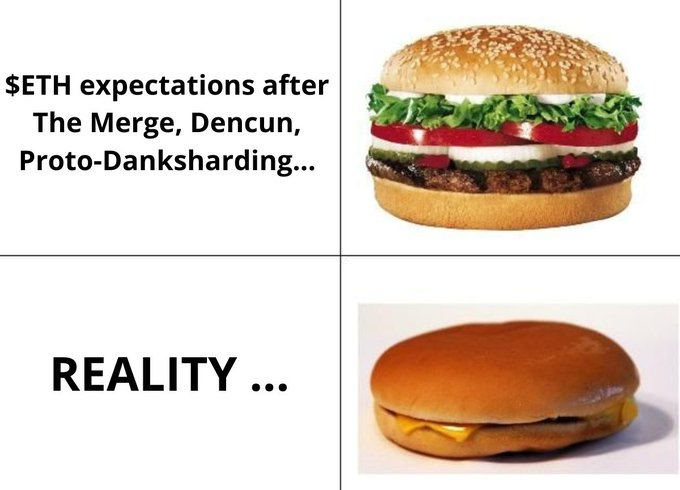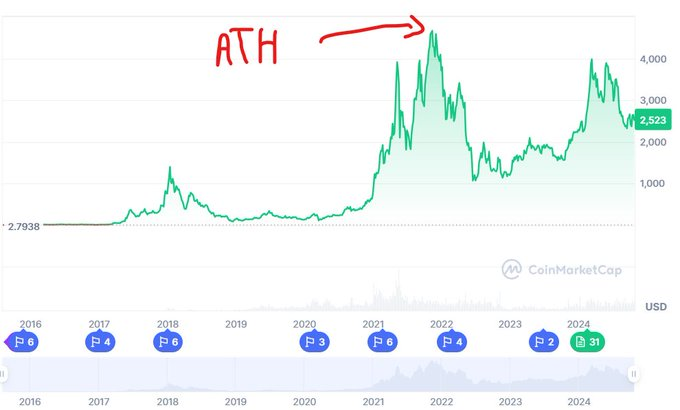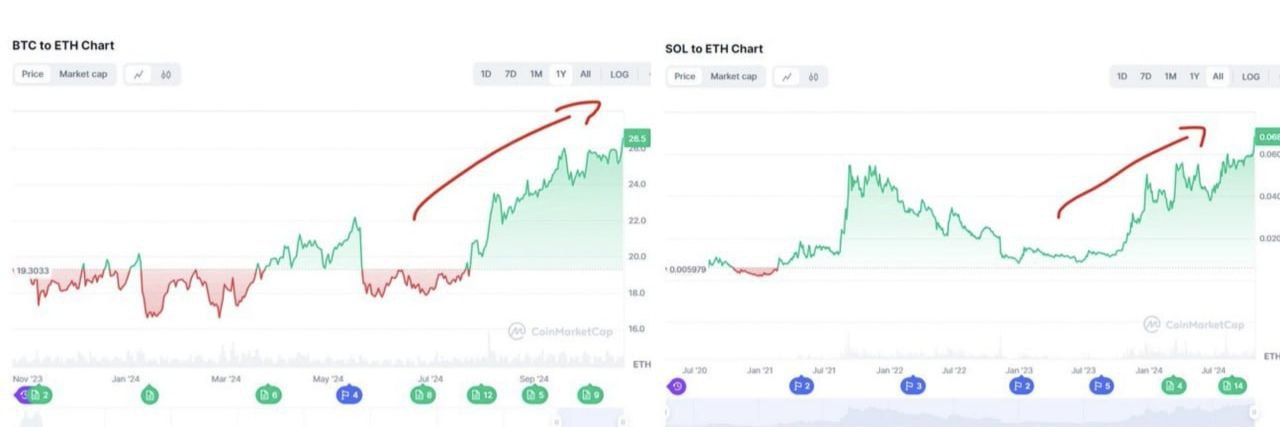Author: BTC_chopsticks
Ethereum was once considered a "blue-chip asset" in the crypto market, with widespread belief that its price would reach new highs in the future, even surpassing $10,000.

However, since 2022, ETH's performance has been lackluster. Does this indicate that Vitalik and Ethereum's future are facing challenges? Let's delve into the reasons behind this.

1. The Gap Between Expectations and Reality
In the past two years, significant upgrades to Ethereum have filled people with anticipation for its future, especially the "deflationary" effect on ETH supply. However, the actual market performance has been surprising. Despite a series of scaling and upgrades, ETH's market performance has been relatively poor, even significantly lagging behind BTC and other tokens like Solana.

2. The Setback of ETH ETF
Many hoped that the launch of an ETH ETF would drive up ETH prices, but the outcome was disappointing. Unlike the price surge seen with the launch of the Bitcoin ETF, the listing of the ETH ETF led to capital outflows, partly due to the selling pressure from Grayscale's legacy products.

3. The "Unexpected" Impact of Upgrades
The Ethereum Merge and EIP-1559 have indeed successfully reduced the issuance of ETH, but the latest Dencun upgrade, while lowering the cost of writing data to the main chain, has indirectly reduced ETH's revenue sources, unexpectedly diminishing the token's appreciation potential.

4. Concerns Raised by Vitalik's ETH Sale
Ethereum founder Vitalik recently sold a portion of his ETH to support development. Although the amount sold was relatively small, it generated negative sentiment in the market. Some investors believe this may imply a lack of confidence from Vitalik in ETH, even though he has repeatedly stated that the price of ETH is not a priority for him.
5. Absence in Emerging Trends
Many of the current emerging trends in the market—such as AI, RWA (real-world assets), and memecoins—have largely not chosen Ethereum as their main platform. Many new AI projects (like Fetch, TAO) and RWA projects have opted for more suitable independent networks and underlying architectures, while in the memecoin space, Solana's performance has been notably better. This indicates that while Ethereum has opened the door to decentralization, other networks are becoming the dominant players in the latest narratives.
6. The Future Value Fate of ETH
ETH currently remains a cornerstone of the decentralized finance (DeFi) ecosystem, accounting for over 55% of the total locked value. However, with the proliferation of L2 scaling solutions, Ethereum may face a dilemma in the future of "ecological prosperity but token value not realized," similar to the $ATOM coin in the Cosmos ecosystem.

Personal Outlook
Although I once firmly believed that ETH's price would reach $10,000, I have become more cautious about this goal. ETH still accounts for 30% of my investment portfolio, but in the next bull market, I may gradually sell off some assets while holding the remainder to observe its future performance.
Conclusion:
ETH's network utility and ecological position remain solid, but recent performance has raised concerns in the market. While ETH is still a leader in the industry, if it fails to adapt to emerging trends, it may gradually lose some of its dominant position in the future. Ethereum still possesses significant first-mover advantages in the decentralized space, but whether it can maintain its core value will require finding a new balance between L2 development and other narrative waves.
免责声明:本文章仅代表作者个人观点,不代表本平台的立场和观点。本文章仅供信息分享,不构成对任何人的任何投资建议。用户与作者之间的任何争议,与本平台无关。如网页中刊载的文章或图片涉及侵权,请提供相关的权利证明和身份证明发送邮件到support@aicoin.com,本平台相关工作人员将会进行核查。




